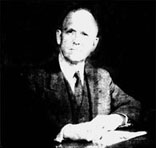
 |
 |
||||||||
|
||||||||
 The Board had other concerns to deal with in 1942. It met with town officials and the Premier to plan a farewell for the No. 9 School. A reception and dance were held at the High School in late June and President Brennan spoke at the final ceremony on July 6 on behalf of the organization.
The Board had other concerns to deal with in 1942. It met with town officials and the Premier to plan a farewell for the No. 9 School. A reception and dance were held at the High School in late June and President Brennan spoke at the final ceremony on July 6 on behalf of the organization. The businessmen of Summerside, through the Board of Trade, played a significant role in the wartime years. Most of their achievements were made behind the scenes. A.R. Brennan, president for the years 1940-42, reflected on the organization's quiet presence. "Many of the things that have been done do not show on the surface … . Things done quietly in the correct quarter are frequently more surely accomplished."
The businessmen of Summerside, through the Board of Trade, played a significant role in the wartime years. Most of their achievements were made behind the scenes. A.R. Brennan, president for the years 1940-42, reflected on the organization's quiet presence. "Many of the things that have been done do not show on the surface … . Things done quietly in the correct quarter are frequently more surely accomplished."